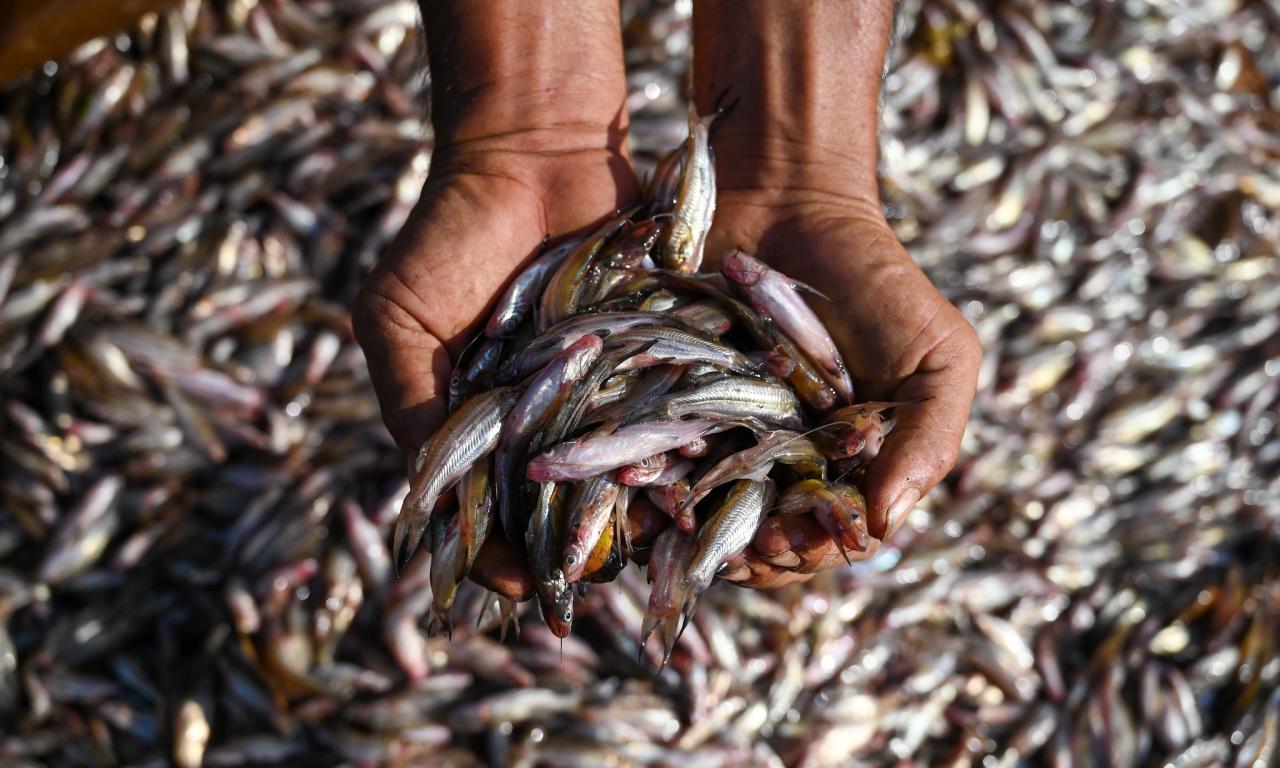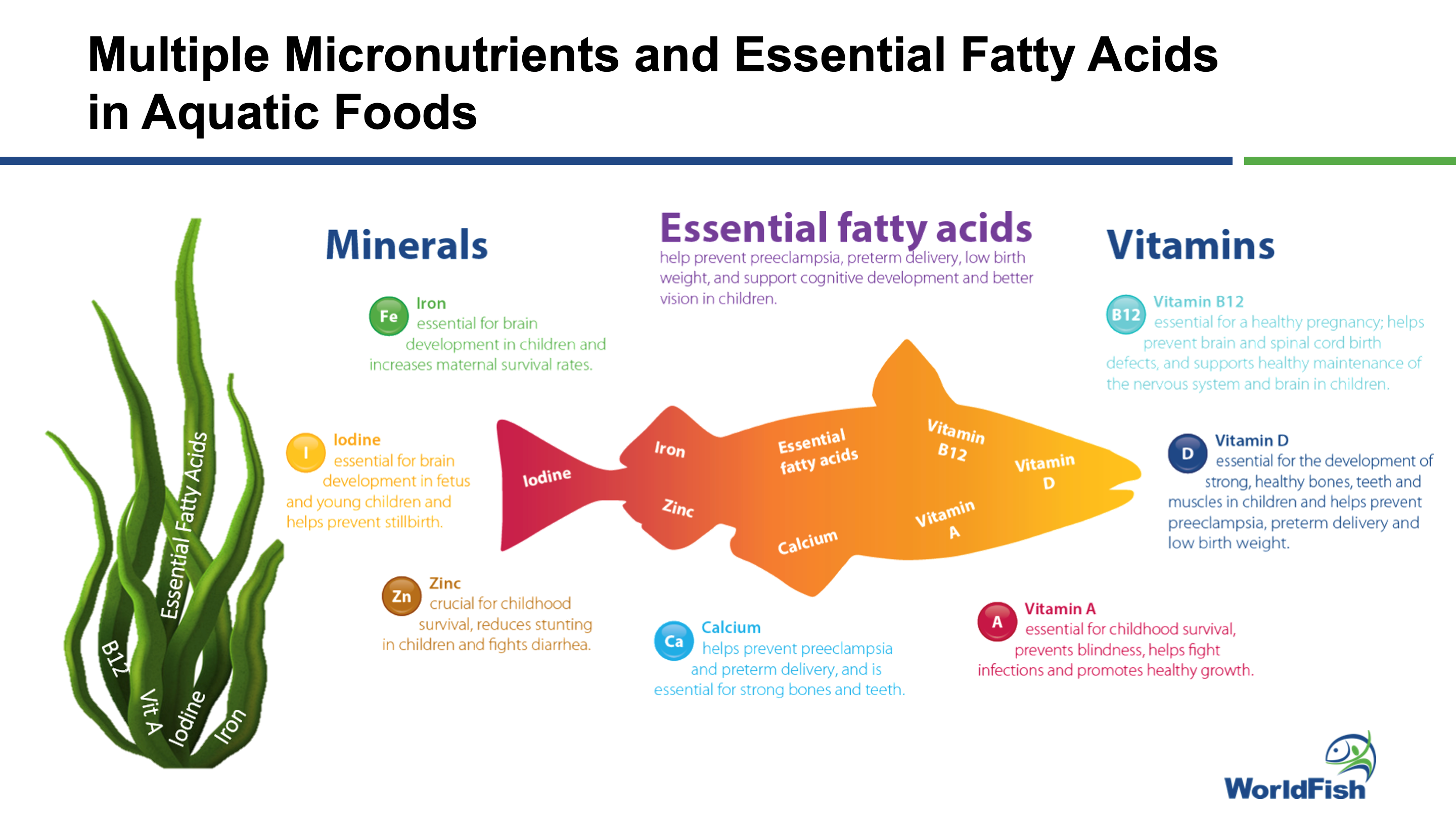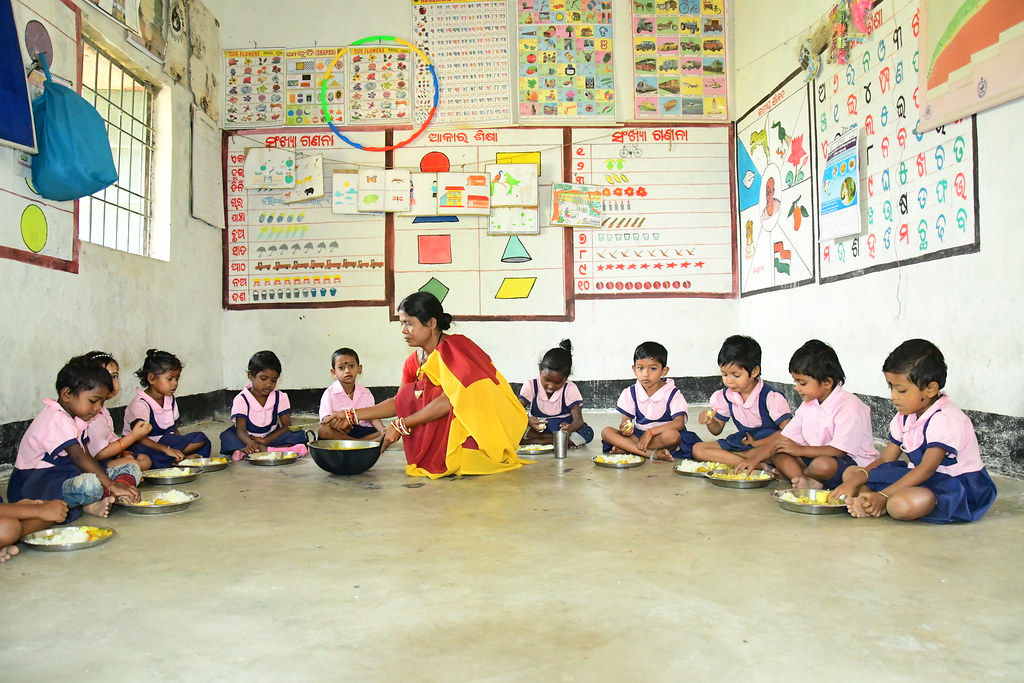
- Aquatic foods are superfoods which are highly bioavailable
- Pilot project in Odisha showcases how aquatic foods can alleviate undernutrition in India
- Aquatic food systems can have positive multiplier effects by improving livelihoods apart from providing health and nutrition benefits
A panel of food and nutrition security experts discussed the benefits of sustainable aquatic foods in tackling malnutrition among poor and marginalized groups in India’s Odisha state, as part of a webinar organized by the National Fisheries Development Board of India.
The panel, which included WorldFish’s Global Lead for Nutrition and Public Health Shakuntala Thilsted and Odisha WorldFish Project Manager Arun Padiyar, was assembled as part of Rashtriya Poshan Maah 2021.
Celebrated annually in the month of September, Rashtriya Poshan Maah is one of the initiatives under the National Nutrition Mission (NNM), locally known as Poshan Abhiyaan, intended to mobilize the community and bolster public participation in efforts to reduce diet-related noncommunicable diseases. NNM aims to holistically improve the consumption of nutrient rich foods in vulnerable groups, particularly children under six years of age and pregnant and lactating mothers.
According to the 2020 Global Hunger Index, India is ranked 97 out of 107 countries in hunger. The COVID-19 pandemic further exacerbated widespread food insecurity, with the Centre for Science and Environment conducting a survey where 80 percent of its respondents in 12 states ate less food after the arrival of the second wave of COVID-19. Up to an additional 132 million and 124 million people went hungry or descended into extreme poverty, respectively.
Due to measures to contain the pandemic, 115 million Indian children who depended on school meals to fulfill their daily nutrient requirements also went hungry. In the first 12 months of the COVID-19 pandemic, an additional 10,000 children died every month and 6.7 million more children wasted in India.
Superfoods for the poor and vulnerable

In her keynote address, Thilsted, who is also the 2021 World Food Prize Laureate, positioned aquatic foods as a potential solution to alleviate the nutrition crisis in India.
“Aquatic foods are considered superfoods as they are a major source of protein, micronutrients and essential fatty acids with small pelagic fishes and carps meeting or even exceeding the recommended nutrient intake for omega-3 fatty acids, in the form of docosahexaenoic acid (DHA) and eicosapentaenoic acid (EPA), vitamin B12 and calcium, particularly during the first 1,000 days of life,” she elaborated.
Thilsted added that aquatic foods can be processed to create nutritious, safe and accessible food products in the form of small fish powder and small fish chutney.
India’s fish consumption is below the global average at only 6.5 kilograms per person per year. There is opportunity to increase production through fisheries and aquaculture as India has a coastline over 7,500 km and diverse inland water bodies, which currently only constitute 30 percent of fisheries production in India.
Aquatic food systems are sustainable and can ensure food and nutrition security without compromising on economic, societal and environmental policies, explained Thilsted.
Implementing a successful pilot project in schools

In the eastern Indian state of Odisha, 29 percent of children under six years of age are stunted from nutrient-poor diets, and the government is working to improve nutrition across the state.
Odisha is the fourth largest fish producing state in India with 873,000 metric tons annually, yet this fish rarely reaches the most vulnerable consumers. The state nutrition program and national dietary guidelines aim to improve the accessibility and consumption of fish via school feeding programs and educational outreach strategies on the benefits of fish.
A total of 4.24 million children under six years of age along with pregnant and nursing women are registered under the Supplementary Nutrition Program whereby beneficiaries are provided Hot Cooked Meals (HCM) and Take Home Ration (THR).
Padiyar shared how fish-based nutrition was included in the State Nutrition Strategy (SOPAN) in March 2020 after WorldFish was invited by the Women and Children Department (WCD) to be a member in the State Technical Advisory Group (TAG) on Nutrition.
A pilot project was initiated in 50 Anganwadi childcare centers located in rural India to improve the dietary diversity and micronutrient intakes of women and children through the introduction of fish and fish-based products. The project also aimed to test the acceptability of dried fish products by tribal community and Anganwadi workers.
Each child received HCM supplemented with 8 grams of fish powder per day for five days in a week whereas each adult under THR consumed 40 grams of dried fish for three days in a week.
As a result of the pilot, the women and children at the participating Anganwadi centers had healthier eating habits and enhanced dietary diversity and micronutrient intake. Apart from that, the taste and ease-of-use of the dried fish products were also culturally appropriate and well accepted.
Synergistic effects of aquatic food systems

Apart from the nutrition and health benefits of this project, it also provided improved livelihoods for women self-help groups through teaching the hygienic solar drying of fish. At least 1,500 women in coastal fishing villages generated additional income from this business venture.
These solar tent dryers are low-cost, energy efficient and environmentally-friendly innovations for drying fish and fish products. They do not require any external power source and the fan in the tent pulls electricity from the battery which is charged via a small solar photovoltaic panel attached to it.
The dryers are capable of achieving temperatures which are 15 to 20 degrees Celsius and humidity lower than outside the tents. This potentially provides an environment which is not conducive for blowflies, beetles and other vermins, thus leading to more hygienic dried fish and fish products. The dryers also offer protection against sand and rain making drying possible all-day and all-year round.
Odisha has over 60,000 multi-purpose Gram Panchayat (GP) tanks, with an estimated total water area of 50,000 hectares. The tanks were initially built for water conservation through rainwater harvesting and are used by villagers in a variety of ways such as washing clothes, bathing, religious rituals and irrigation of agricultural land.
Many of the tanks were in poor condition or underutilised. Collaborating with Odisha’s Department of Women and Child Development, WorldFish trained women self-help groups (WSHGs) to use the GP tanks to produce predominantly rohu, catla and mrigal, and to a smaller extent grass carp, common carp and mola carplet. More than 6,000 WSHGs consisting of over 60,000 women started fish farming ventures using GP tanks resulting in additional income and nutritional gains.
“A paradigm shift is necessary to ensure that fish and other aquatic foods produced are consumed by people, especially the poor and vulnerable in low- and middle-income countries. Building on the holistic approach of the food systems framework and implementing nutrition-sensitive aquaculture will result in improved food and nutrition security, equitable livelihoods and sustainable development of the aquaculture sector,” Thilsted asserted.
